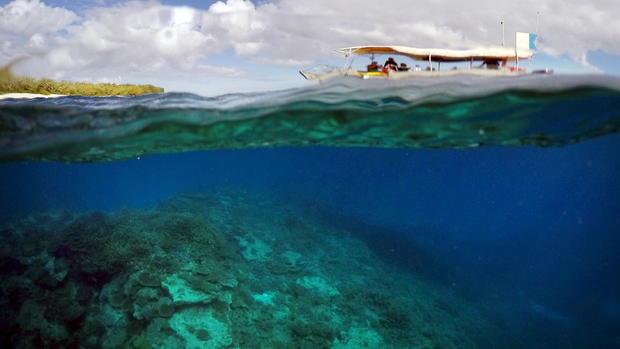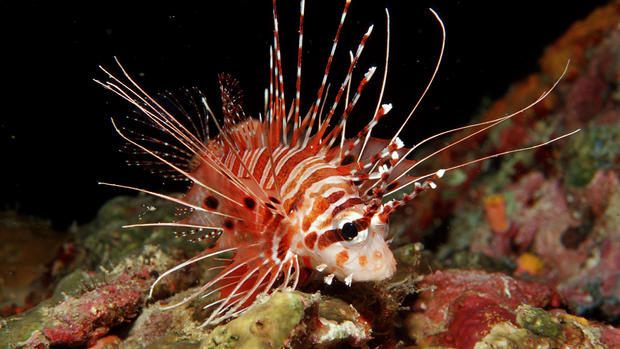Great Barrier Reef dying: Australia downgrades health outlook for corals from poor to very poor due to ocean warming today – CBS News
Canberra, Australia — The government agency that manages Australia’s Great Barrier Reef has downgraded its outlook for the corals’ condition from “poor” to “very poor” due to warming oceans. The Great Barrier Reef Marine Park Authority’s condition report, which is updated every five years, is the latest bad news for the 133,360-square-mile colorful coral network off the northeast Australian coast as climate change and coral bleaching take their toll.
The report issued Friday finds the greatest threat to the reef remains climate change. The other threats are associated with coastal development, land-based water runoff and human activity such as illegal fishing.
“Significant global action to address climate change is critical to slowing the deterioration of the reef’s ecosystem and heritage values and supporting recovery,” the report said. “Such actions will complement and greatly increase the effectiveness of local management actions in the Reef and its catchment.”
The report is the agency’s third and tracks continuing deterioration since the first in 2009. The deterioration in the reef’s outlook mostly reflects the expanding area of coral killed or damaged by coral bleaching.
The report said the threats — which include the star-of-thorns starfish that prey on coral polyps — are “multiple, cumulative and increasing.”
“The accumulation of impacts, through time and over an increasing area, is reducing its ability to recover from disturbances, with implications for reef-dependent communities and industries,” the authority’s chairman Ian Poiner said.
“The overall outlook for the Great Barrier Reef is very poor,” he added.
A study of coral bleaching on the reef, published in the journal Nature in 2017, found 91% of the coral reef had been bleached at least once during three bleaching events of the past two decades, the most serious event occurring in 2016.
A fourth major bleaching struck later in 2017 after the Nature study was published.
Bleaching occurs when corals are stressed by unusual environmental changes, such as increased sea temperature. They respond by expelling the symbiotic algae living in their tissues, causing the coral to turn white. Without the algae, the coral loses its major source of food and often can’t survive.
As CBSNews.com’s Sophie Lewis reported, the Great Barrier Reef — which stretches for more than 1,400 miles off the coast of Australia — has gone through four mass bleaching events due to above-average sea temperatures, in 1998, 2002, 2016 and 2017. Time periods between future bleaching events are expected to continue to shrink as global warming intensifies.
“It’s highly unlikely that we could escape a fifth or sixth event in the coming decade,” said Professor Morgan Pratchett, who co-authored a report earlier this year on the Barrier Reef. “We used to think that the Great Barrier Reef was too big to fail, until now.”
The United Nations’ World Heritage Committee expressed concern about bleaching in 2017 and the report Thursday could lead to the World Heritage-listed natural wonder being reclassified by UNESCO next year as “in danger.”
Environment Minister Sussan Ley said she was not surprised by the downgrade in the reef’s condition given the damage done by recent cyclones and latest bleaching events in successive years.
She said her government was “building resilience in this important global reef” and was keeping its Paris commitment to reduce Australia’s greenhouse gas emissions by 26% to 28% below 2005 levels by 2030.
“I want to make the point that it’s the best managed reef in the world,” she said.
While the Great Barrier Reef is the world’s largest coral reef system, reefs around the world are under stress from warming ocean temperatures.





